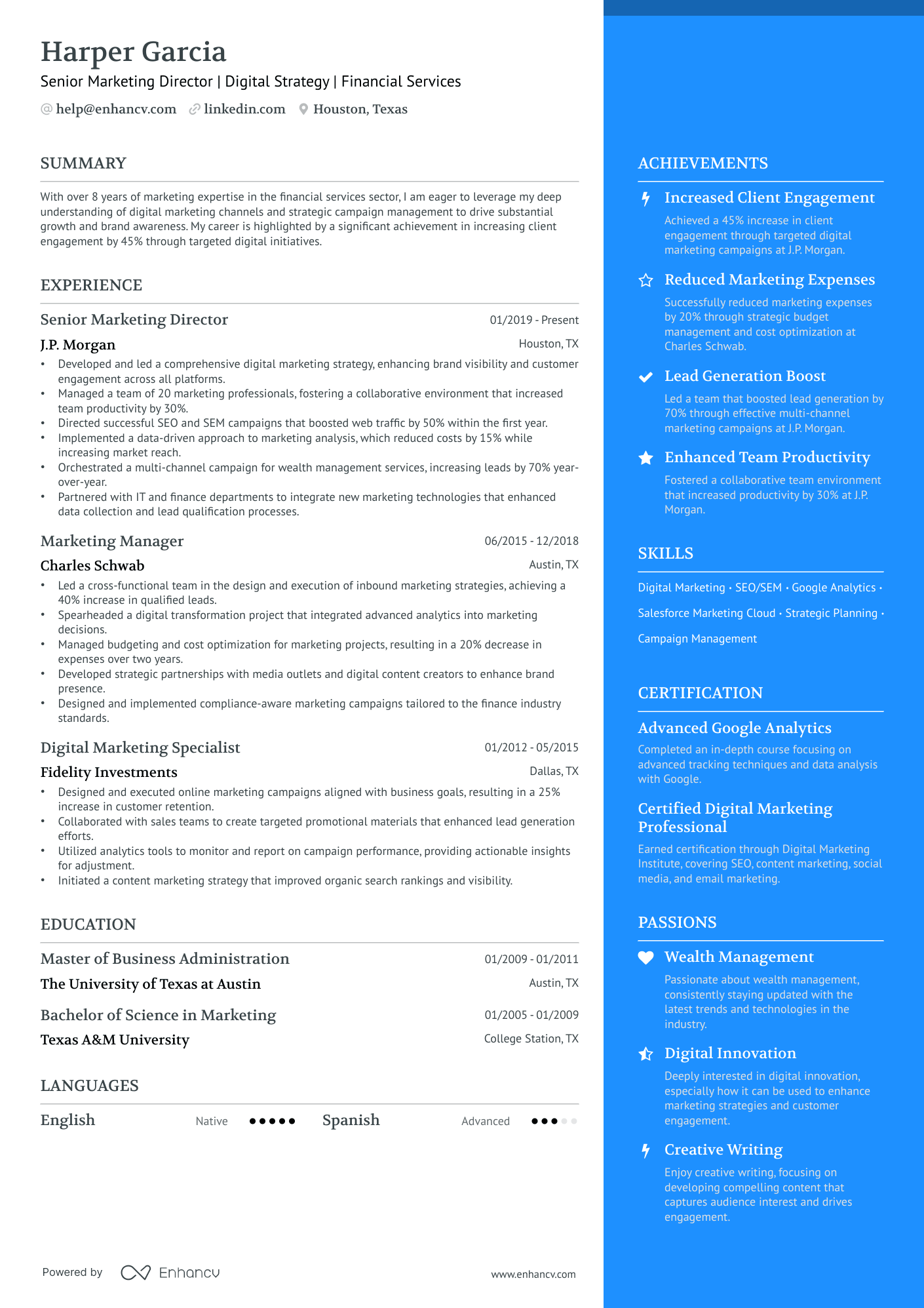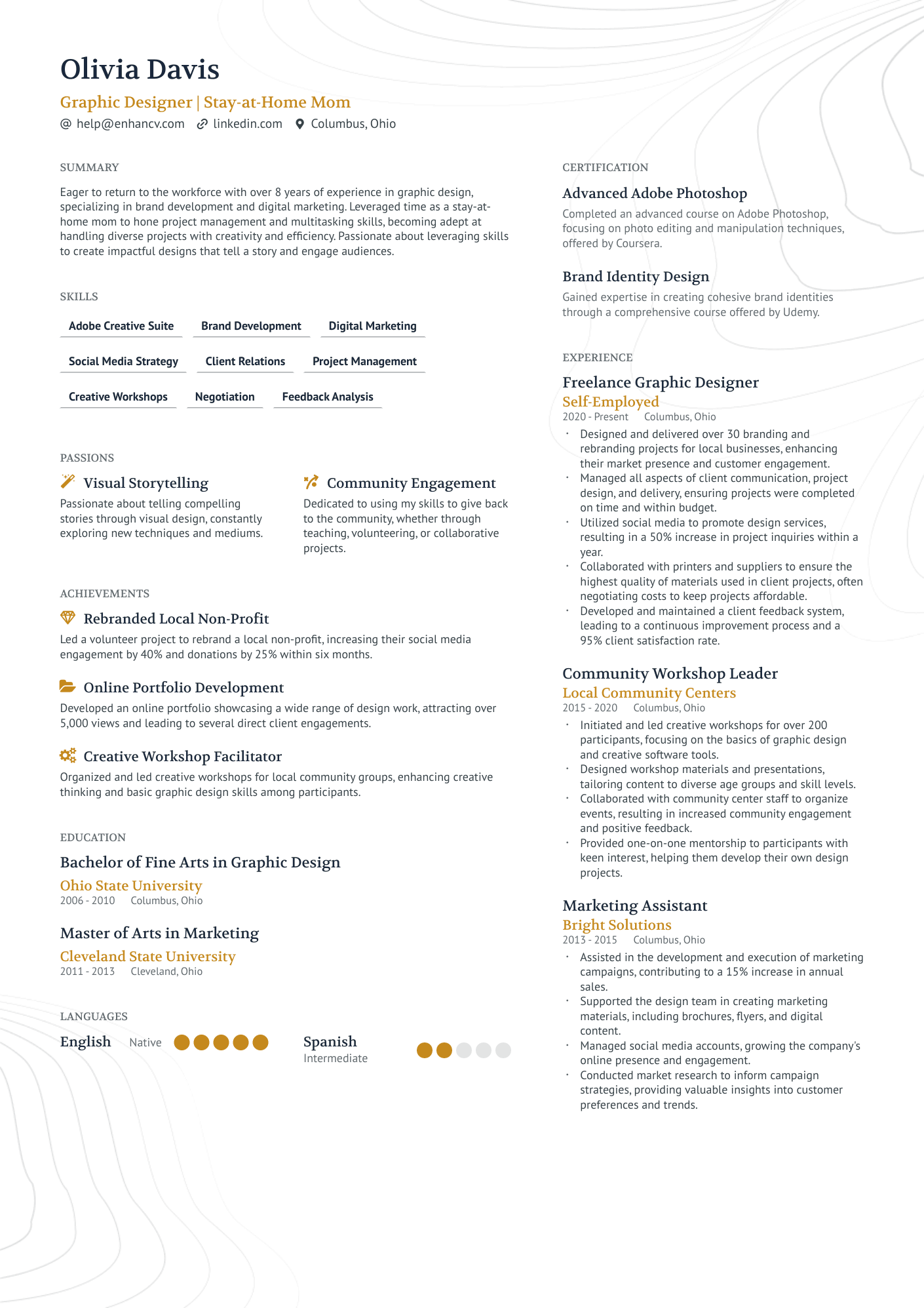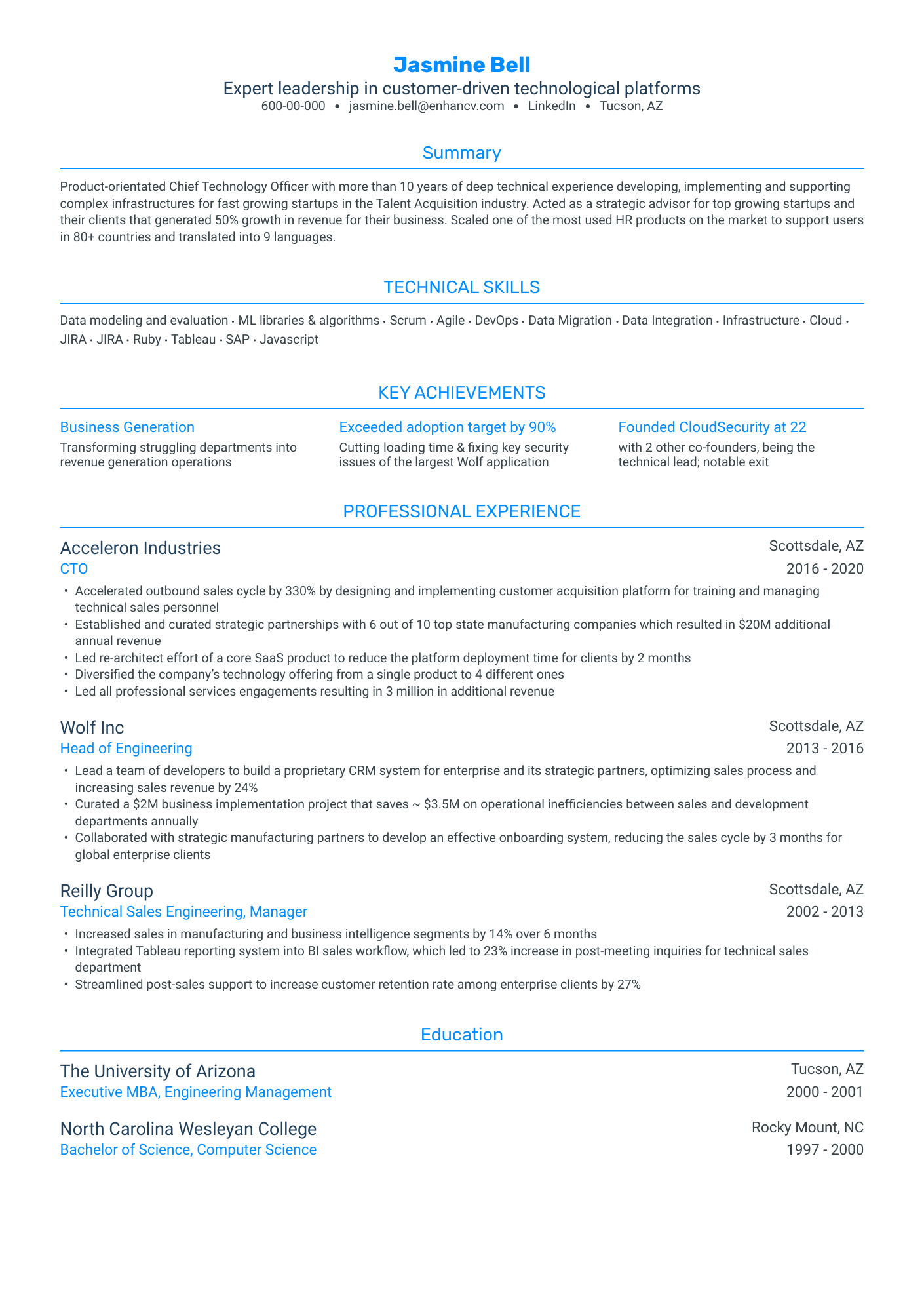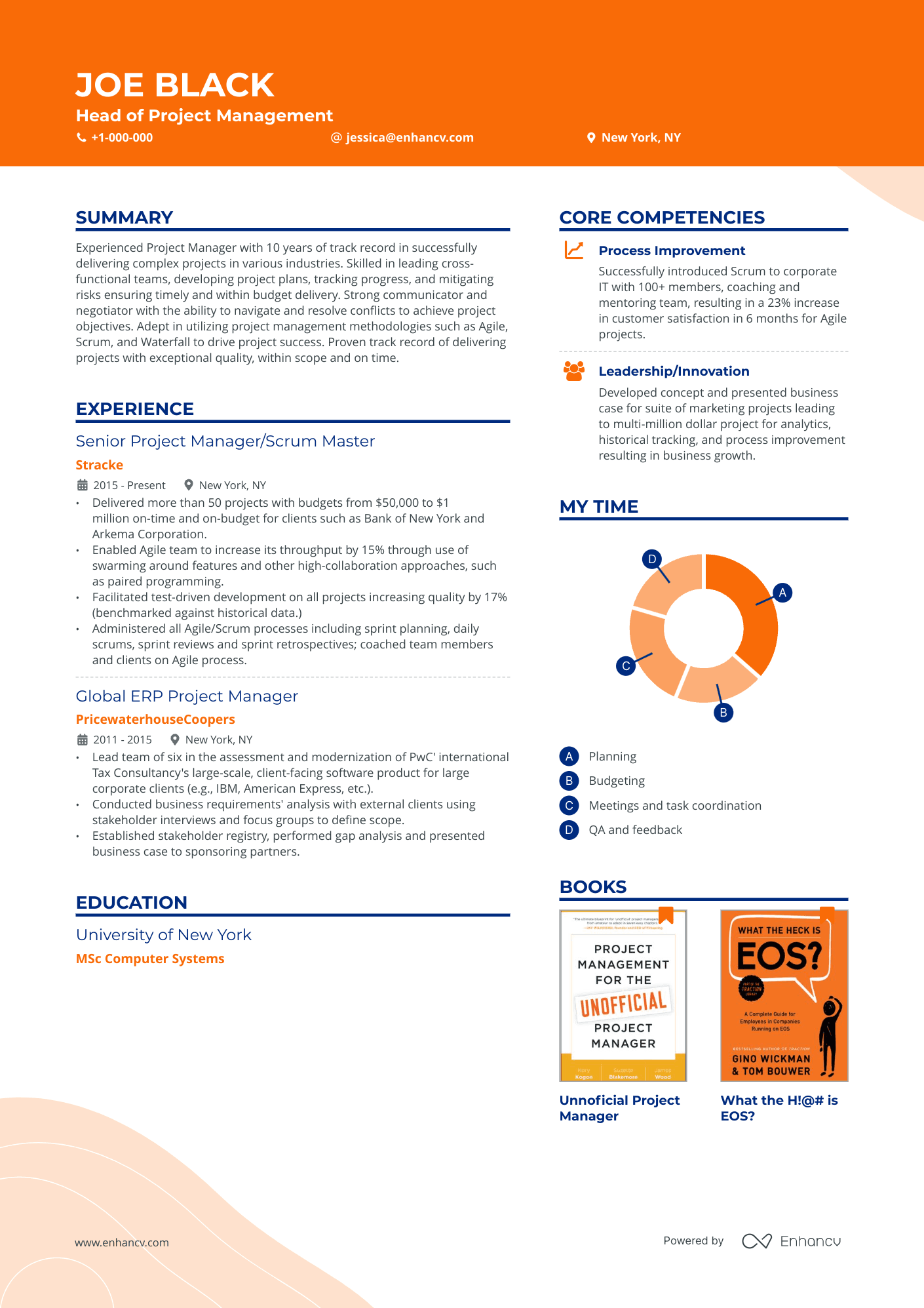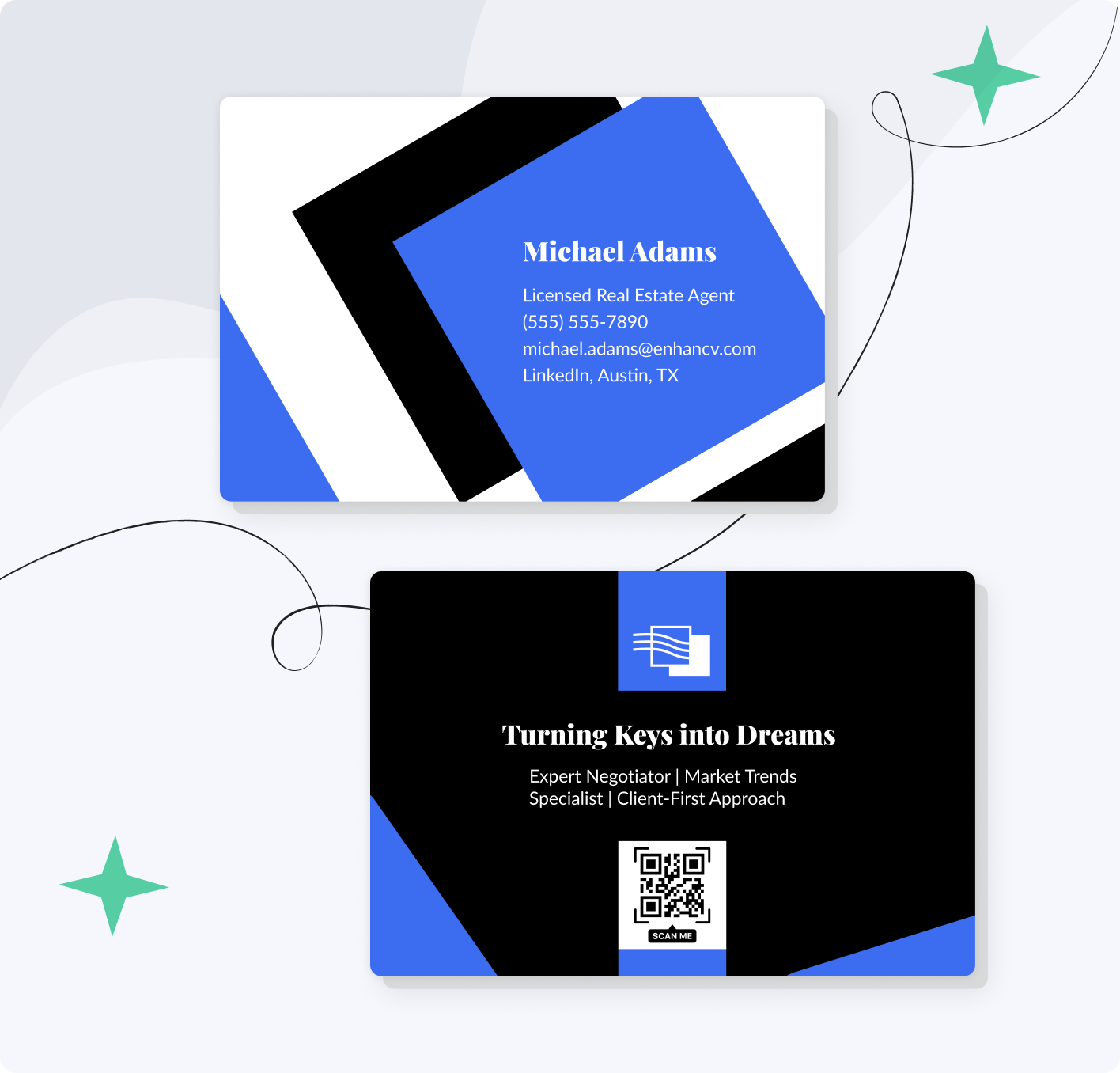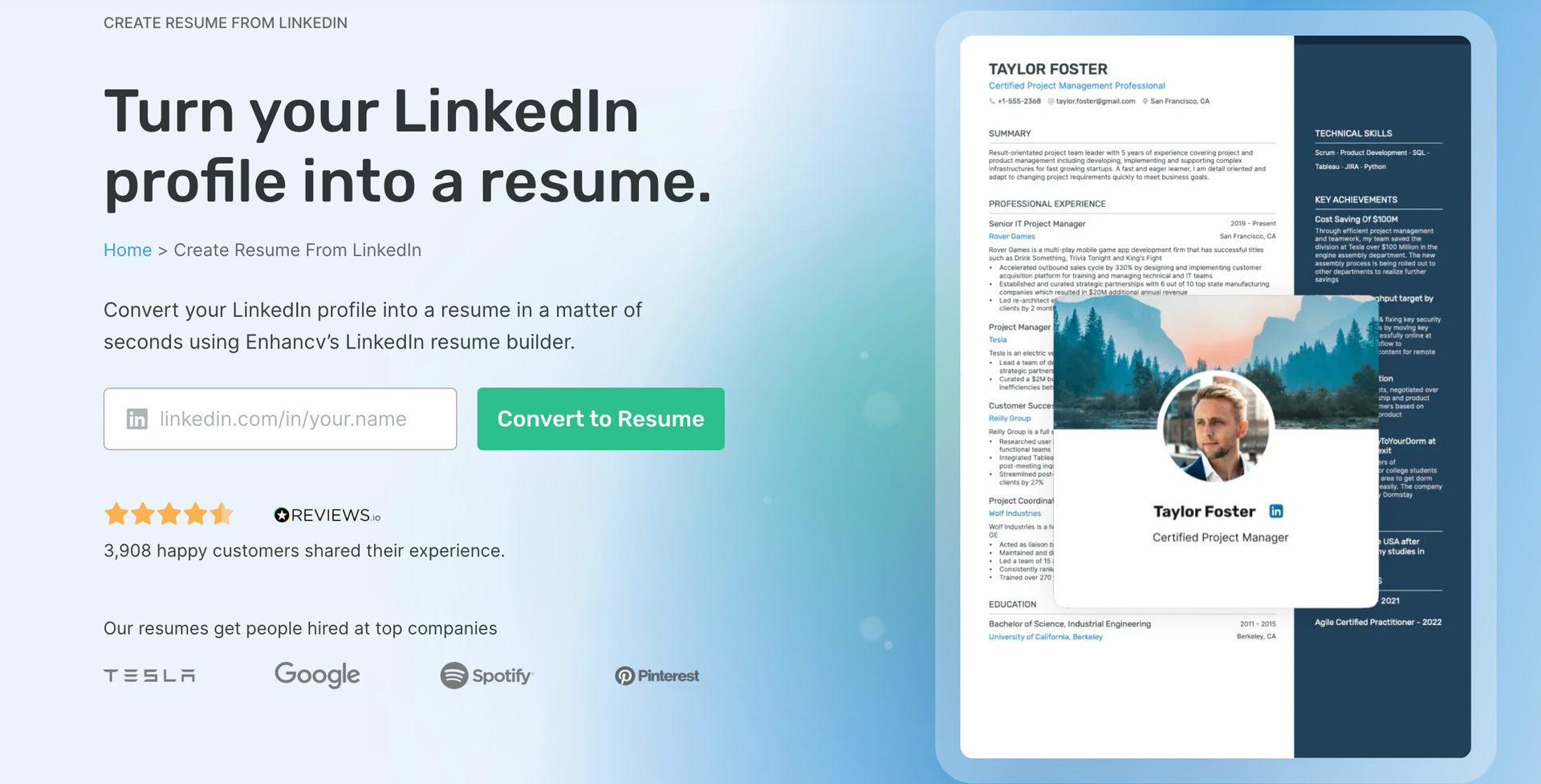Picking the best resume type can be the difference between landing an interview or getting lost in the pile. When you write a resume, the goal is simple: make your qualifications shine in a way that resonates with hiring managers.
With various resume types to choose from, the decision can feel overwhelming. A well-matched format highlights your strengths, a mismatched one can hide them. Whether you’re showcasing a steady career, navigating employment gaps, or emphasizing skills, there’s a format to serve your needs.
But remember—every resume should be tailored to the job. Let’s explore each of these so you can confidently choose the format that lands you an interview.
Key takeaways
- When deciding which resume type to use—reverse chronological, functional, or combination—choose the format that best highlights your strengths and experience.
- Whichever type you select, always tailor your resume to the job description for the best results.
- Consider alternative resume types when the role or context calls for something different.
- Transform your LinkedIn profile into a traditional resume for quick applications or to boost your personal branding.
- Use clear formatting and relevant keywords to pass ATS screening and impress recruiters.
Let’s dive in.
What are the different types of resumes that get results today?
Most resume sites classify formats into three main kinds—reverse chronological, functional, and combination resumes. These traditional formats cover most needs, but we cannot stress enough the importance of the targeted resume. Often labeled a "non-traditional" approach, a targeted resume isn’t about a different structure—it’s about tailoring your content to match each job posting.
Here’s why we emphasize this:
Even the best format falls flat if it doesn't align with what the employer is seeking. A targeted approach ensures that whether you choose chronological, functional, or combination, every section of your resume reflects the specific requirements of the role.
So, we’ll break down the three most common resume types with one crucial addition—the targeted resume—and explain how each can work for you.
Meanwhile, make sure your current resume is as effective as possible with our free resume checker.
Is your resume good enough?
Drop your resume here or choose a file. PDF & DOCX only. Max 2MB file size.
Reverse chronological
The reverse chronological resume is the go-to format for most job seekers and for good reason. In this type of resume, your work experience is listed up top starting with your most recent role and working backward.
This approach immediately shows hiring managers where you are now in your career and how you got there. It’s a clean, familiar layout that highlights your professional journey and makes your achievements easy to follow.
Benefits of the reverse chronological
Here are the main reasons why this framework is universally acknowledged:
- Easy to read: Recruiters can quickly scan your work history without getting lost. Recent, relevant experience is front and center, which helps them see your current strengths first.
- ATS-friendly: This format plays well with applicant tracking systems (ATS), which scan resumes for keywords.
- Shows growth clearly: It paints a picture of how your career has progressed over time.
- Widely accepted: Works across most industries and job types—from corporate roles to creative positions.
How to structure a reverse chronological resume
The reverse chronological resume follows a clear, easy-to-digest structure that spotlights your experience.
Here’s how to organize it for maximum impact:
Recommended section order for reverse chronological resumes
- Contact Information: Include your name, phone number, email, LinkedIn profile, and location in your header. Consider adding a concise, impactful headline to grab attention immediately.
- Summary or Objective: Craft a brief, compelling resume profile that highlights your key skills and career goals. Make it tailored to the role to immediately show your fit.
- Work Experience: List your jobs starting with the most recent. Focus on achievements and responsibilities using action verbs and quantifiable results to show your impact.
- Skills: Highlight a mix of hard and soft skills that match the job description. Be specific to show you have what the employer is looking for.
- Education: Include your degrees, certifications, and relevant coursework.
This format highlights your career progression and is ideal if you have a steady work history. Let’s look at other types of applicants who can benefit from this classic resume structure.
Who is it for?
The reverse chronological resume is a versatile format that works well for many job seekers, especially those who want to emphasize their work experience. If your career path has a clear flow or your recent roles align perfectly with your target job, this format can help you shine.
Here’s a quick guide to who it’s most suitable for:
- Professionals with a steady work history: If you’ve been consistently employed without major gaps, this format presents your experience clearly.
- Applicants staying in the same industry or company: When your past roles—even within the same organization—are directly relevant to the job you’re applying for, this format makes your fit obvious.
- Candidates with career growth: If you've earned promotions or taken on increasing responsibilities, this format highlights your upward trajectory.
- Those applying for traditional roles: Industries like finance, law, and other corporate sectors expect a clear, chronological work history.
- Recent graduates with internships or relevant experience: If you’ve had part-time or internship roles related to your field, this format helps emphasize that early experience.
- Candidates with experience at well-known companies: If you've worked for recognizable brands or industry leaders, listing these prominently helps boost credibility and catch a recruiter’s eye.
Feel free to use the reverse chronological resume sample below and personalize it in our AI-powered resume builder.
Next, let’s look at the second most popular resume type—the functional format.
Functional resume
The functional resume focuses on skills and competencies rather than a linear work history. Instead of listing jobs in reverse order, this format highlights your abilities upfront, making it ideal when your skills are stronger than your work experience or you have limited work history. It’s also a great way to shift attention away from employment gaps or career changes and put your capabilities in the spotlight.
PRO TIP
The functional resume is also known as the skills-based resume. Many job seekers shy away from it, worried it might make them look inexperienced or like they’re hiding something. It’s true that in some industries and countries, recruiters can be wary of this format.
But remember—every resume is about showcasing your skills and strengths. The functional format allows you to spotlight them in detail. Just be sure to back them up with specific examples and results. Avoid turning your skills section into a generic laundry list. If done well, the functional format can highlight your potential even more effectively than a traditional one.
Benefits of the functional resume
Here are the key reasons why this format can be a smart choice:
- Skill-focused: It emphasizes your qualifications, allowing you to lead with what you can do rather than where you’ve worked.
- Hides gaps: Minimizes attention to non-linear career choices by prioritizing abilities over dates.
- Career change-friendly: Showcases transferable skills that apply to a new industry or role, even if your experience isn’t directly related.
- Flexible structure: Gives you more freedom to organize sections based on strengths, making your best attributes stand out.
- Great for smaller companies: In smaller businesses, your resume may go directly to the employer. The functional format helps you connect with them right away, and they’re less likely to scrutinize resume conventions like trained recruiters would.
How to structure a functional resume
A functional resume follows a skills-first layout to highlight your talents.
Here’s how to build your document for maximum effectiveness:
Recommended sections order for functional resumes
- Contact Information: Include the standard contact details in the header and remember to feature a link to your portfolio or LinkedIn. They’ll provide a better insight into your professional interests.
- Ojective Statement: Write two or three lines emphasizing your skills and value proposition. Tailor them to the job you’re applying for.
- Skills Section: Group your skills into categories (e.g., "Project Management," "Customer Relations," "Technical Skills"). For each category, provide two to three bullet points with examples of how you’ve applied those skills.
- Work Experience: Include a brief, streamlined list or a summary of your previous jobs without going into detail. Focus on job titles, company names, and dates.
- Education (optional): Include this section if it adds value to your application, such as highlighting relevant degrees or certifications. If you're a college student or applying for an academic position, place it prominently at the top.
PRO TIP
The functional resume offers a great opportunity to leverage a strong core competencies section. While this section is valuable on any resume, the functional format allows you to expand on it with more detail.
For candidates switching industries, a well-crafted core competencies section can highlight transferable skills and seal the deal with recruiters by clearly connecting your abilities to the new role.
Beyond career changers, the functional resume can benefit other professional scenarios, too. Read the full list below.
Who is it for?
The functional resume is ideal for job seekers who want to emphasize their skills over their work history. As mentioned above, this includes candidates with little to no experience or those transitioning to a new field.
Here’s who benefits most:
- Career changers: If you're transitioning to a new industry or role, this format showcases transferable skills over past job titles.
- Applicants with employment gaps: Focus on your strengths to downplay periods of unemployment or career breaks. If you’re re-entering the workforce, this format helps spotlight your skills and downplay any extended time away from employment.
- Freelancers and contractors: Highlight core competencies and projects rather than a string of short-term roles.
- Recent graduates: If you have limited work experience, this format emphasizes the skills you gained through coursework, internships, or volunteer work.
- Job-hoppers: If your work history is varied or non-linear, a skills-focused approach creates a cohesive narrative.
Take a look at this well-written functional resume sample for inspiration:
Moving on to the third most common resume type—the combination, or hybrid, format.
Combination resume
The combination resume—also known as the hybrid resume—blends elements of the reverse chronological and functional formats. One part focuses on your skills and the problems you’ve solved, while the other highlights your work experience—striking a balance between what you can do and how you’ve done it.
This format often uses a double-column layout, helping to visually balance strengths and achievements. It’s also perfect for underlining transferable skills while still providing a clear career history.
Benefits of the combination resume
Here’s why this format can give you an edge:
- Gives recruiters what they seek: A clear employment history makes it easy for recruiters to scan your career progression.
- Meets decision makers’ expectations: Offers a glimpse into your personality through how you communicate your skills.
- Works for specialized roles: Ideal for jobs that require a mix of technical skills and hands-on experience, like IT, healthcare, or project management.
- Good for general resumes: The hybrid format is a strong choice for one-off resumes submitted to databases or job boards. It highlights both your skills and experience, ensuring you appeal to a wide range of potential employers.
Now, let’s look at the essential sections of a combination resume.
How to structure a combination resume
The combination resume follows a layout that balances skills and experience.
Here’s how to build yours:
Recommended sections order for combination resumes
- Contact Information: Include the usual details and remember to add a headline to summarize your expertise.
- Compelling Summary: Craft a tailored profile highlighting your skills and career achievements. Keep it concise and focused on the role you want.
- Skills or Core Competencies: List your key skills and competencies, grouped into categories. Use bullet points to give context or brief examples.
- Work Experience: List your jobs in reverse chronological order. Focus on achievements and responsibilities that reinforce the abilities you listed earlier.
- Additional sections: If you have any space left, emphasize honors or specialized training if applicable.
The hybrid format offers the flexibility to craft a recruiter-friendly and creatively impactful resume. Below, we explore the career situations where a combination resume could be your strongest choice.
Who is it for?
See if you’re one of the job seekers who wants to spotlight versatility above all else:
- Professionals with specialized skills: Roles requiring a mix of technical expertise and work experience benefit from this balanced approach.
- Applicants with diverse experience: If your background spans multiple roles or industries, this format helps tie everything together.
- Mid-level professionals: If you’ve built a solid career but want to highlight specific skills, the combination format covers both.
- Freelancers or contractors: Perfect for showing a blend of competencies and projects, even if your work history is varied.
- Those with gaps in work history: Placing skills up front can minimize attention on employment gaps.
Here’s a hybrid resume sample you can tailor to your needs:
Now, let’s recap the three essential resume types covered today:
We’ve already highlighted the importance of tailoring your resume to a specific job description. That brings us to an aspect that doesn’t get enough attention—the targeted resume. In the next section, we’ll cover everything you need to know.
Targeted resume
The targeted resume isn’t a separate format—it’s an essential approach that should be applied to every resume type. Whether you’re using reverse chronological, functional, or combination, tailoring your content to the specific job description helps your resume stand out and show employers you’re the perfect fit.
A generic resume might save time, but a targeted one greatly increases your chances of landing an interview. Using a resume builder like Enhancv lets you create unlimited resumes and stay in control of every change.
When to use a targeted resume
Preferably, always. Every resume should be tailored to the job description to show you're the spot-on choice.
Yet, some candidates prefer to have a generic copy on hand. This catch-all version is often used when applying to multiple roles quickly, uploading to job boards, or adding to databases. It’s understandable—creating one resume and sending it everywhere saves time and effort.
But here’s the problem: generic resumes don’t connect with hiring managers. They lack specificity, making it hard for the employer to see how you meet their unique needs. The human brain responds better to relevance and personalization.
When a recruiter reads a resume that mirrors their job description, it triggers the similarity-attraction effect—a psychological factor that builds trust and confidence in your application.
A targeted approach shows that you understand the company’s needs and can deliver on them. So, instead of making the recruiter work to figure out how you fit, you’re handing them the connection on a silver platter.
This personalized effort makes your application more compelling and significantly improves your chances of landing that interview.
How to create a targeted resume
Focus on aligning these key elements with the specific job posting:
Recommended steps for targeted resumes
- Analyze the job description: Carefully read the posting and highlight key skills, qualifications, and responsibilities the employer is looking for.
- Customize your summary or objective: Use keywords and phrases from the job ad to emphasize how your qualifications and career goals align with the role.
- Tailor your work experience: Highlight achievements and responsibilities that directly match the job requirements. Use action verbs and include metrics to show your impact.
- Mirror the skills section: List the hard and soft skills mentioned in the job posting. Be specific and use the exact terms to ensure ATS compatibility.
- Prioritize relevant information: Remove or minimize anything that doesn’t support your fit for the role.
- Proofread for alignment: Double-check your resume and make sure each section speaks to the job requirements and reinforces your suitability.
In a good resume, you often have to let go of your darlings—those details that, while beloved, don't directly relate to the job you're targeting. Remember, your resume isn’t about you, it’s about the person reading it and how well you meet their needs.
Perfection is finally attained not when there is no longer anything to add, but when there is no longer anything to take away.
Antoine de Saint-Exupéry
Alternative resume types
Beyond the three main types—reverse chronological, functional, and combination—there are alternative resume types designed for specific situations or creative industries.
These formats, like infographic and video resumes, break away from traditional structures to make a unique impression. They’re not widely used in standard job applications but can be effective when the role or industry allows for more creativity.
We differentiate these less common types because they often don’t follow traditional resume conventions and may not be ATS-friendly. While they can help you set yourself apart, they work best when you’re certain they’ll resonate with your audience—typically smaller companies, creative fields, or networking opportunities.
Now, let’s take a closer look at the first of these unusual formats—the infographic resume.
Infographic resume
An infographic resume transforms your skills and experience into a visual message. This format blends design elements like icons, charts, timelines, and creative layouts with a playful mix of fonts and colors to tell your professional story.
Instead of heavy blocks of text, it uses visuals to make information pop and stick in the mind.
While using eloquent, descriptive words is one way to create an image, a photograph or illustration can frequently leave a more vivid imprint in the audience’s heart and mind.
Nancy Duarte, communication expert and author of Resonate
A well-designed resume guides the hiring manager's eye to your strengths, making your application memorable. In a sea of text-heavy resumes, thoughtful visuals can make yours stand out, showing you understand the power of effective communication.
When to use an infographic resume?
Creative resumes work best when brand identity and visual communication are valued in the role.
Consider using one when:
- You’re applying to design, marketing, media, or other creative fields.
- You want to showcase design skills or your ability to present complex information visually.
- You’re attending networking events, conferences, or career fairs, where a unique format can catch attention.
- You’re sharing your resume on personal websites or portfolios, where ATS compatibility isn’t a concern.
How to structure your infographic resume
Here are a few pro tips to keep in mind when developing your visual resume:
Tips on building an infographic resume
- Keep it clear and readable: Balance creativity with clarity and don’t overcrowd the design. White space helps the layout breathe and makes your information easier to digest.
- Use visual hierarchy: Guide the reader’s eye by using different font sizes, colors, and icons to emphasize key sections like skills, achievements, and contact info.
- Stick to a cohesive color palette: Limit your colors to two or three complementary shades to keep the design professional and visually appealing.
- Highlight data with graphics: Consider using charts and timelines to illustrate stats or your career progression. But remember, visuals should support the content, not replace it.
- Mind the ATS limitations: Many applicant tracking systems can’t read graphics. Have a text-based version ready when applying online.
Who is it best for?
This visually engaging resume type isn’t for everyone, but depending on the job you’re applying for, it can be a game-changer.
Here’s who benefits the most:
- Graphic designers, marketers, and creatives who want to display their design skills.
- Freelancers looking to stand out and present their brand identity.
- Job seekers with strong visual storytelling skills who want to emphasize creativity.
- Sales positions where achievements and revenue figures are best communicated visually.
Enhancv's infographic templates let you make visually stunning resumes that are ATS-compliant, so you can showcase your individuality without worrying about data viz issues.
Moving on to another type of creative resume—the video format.
Video resume
A video resume is your chance to personally introduce yourself to potential employers, emphasizing your skills, experience, and personality on camera. Unlike traditional paper resumes, this dynamic format lets you make a memorable impression through your delivery, tone, and body language.
Is the future visual?
The demand for video resumes is set to rise. According to the BBC, 79% of hiring managers say video is becoming more important for vetting candidates, and 61% of job seekers believe video could be the next evolution of job applications.
While video resumes are great for grabbing attention and showcasing your personality, they’re not a replacement for a traditional resume. Think of them as your trailer—a highlight reel of your most relevant and interesting experience.
But just like a trailer can’t tell the whole story of a movie, a video can’t cover every detail employers need. A noteworthy resume is still essential for providing a complete picture of your qualifications. Use both together to make a powerful, memorable impression.
When to use a video resume
A video resume works best when the role or situation calls for more than just a traditional application.
Consider using one when:
- You’re specifically asked for one: Some job postings or applications may request a video submission as part of the process.
- The job values communication skills: Roles in sales, marketing, public relations, or customer service often require charisma and strong speaking abilities.
- You’re applying to creative industries: Fields like media, entertainment, design, or social media appreciate innovative and engaging applications.
- You want to showcase your personality: If the company culture values authenticity and enthusiasm, a video can help you stand out.
- It’s for networking or virtual events: Video resumes are great for virtual job fairs, networking conferences, or personal websites where you want to make a memorable introduction.
- You’re targeting startups or forward-thinking companies: These organizations often embrace non-traditional approaches and value creativity.
So far, so good—but how do you pack all that information into a short window? Follow these guidelines to make every second count.
How to structure your video resume
To craft an effective video resume, keep it concise and engaging.
Start with your name, your current role or career objective, and a brief overview of what you offer. Then, highlight a few key skills, providing specific examples or achievements that demonstrate them.
Explain why you're excited about the position and how your background makes you a perfect fit. Close by thanking the viewer and suggesting the next step, such as contacting you for an interview.
Best practices for a video resume
- Aim for a length of 60-90 seconds to keep the viewer's attention.
- Dress appropriately, maintain good posture, and ensure clear speech—just like you would in an in-person job interview).
- Use good lighting, a clean background, and clear audio to enhance professionalism.
- Keep transitions smooth and avoid overuse of effects—simplicity is key.
- Maintain eye contact by looking directly into the camera. This builds trust and makes your virtual communication feel more personal and engaging.
- Be authentic and enthusiastic, letting your true self shine through.
Who’s it best for?
- Sales and marketing professionals: To exhibit persuasive communication skills.
- Performers or public speakers: To showcase on-camera presence.
- Customer service representatives: To highlight approachability and interpersonal skills.
- Creative professionals: To demonstrate storytelling and creative thinking.
Here’s a video resume script example for a journalist applying for a morning anchor position.
Hi, I’m Alex Carter, a multimedia journalist with over five years of experience covering breaking news, feature stories, and everything in between. My passion lies in digital storytelling—blending video, social media, and written content to create stories that engage and inform.
At Metro Daily News, I led a live coverage series that increased site traffic by 40% and sparked meaningful conversations among our audience. I thrive on tight deadlines, clear communication, and stories that truly connect people.
I’m excited about the opportunity to bring this same energy and dedication to KMGH and help deliver reporting that resonates with your viewers.
You can find more details about my experience and skills in the resume attached. Let’s connect and tell some amazing stories!
Thank you for your time. I look forward to hearing from you soon!
Next, let’s pay special attention to another resume type that’s just the opposite of visually dynamic—the federal resume.
Federal resume
A federal resume is a specialized document used when applying for US government positions. Unlike regular US resumes, this format is far more detailed, often stretching to two to five pages, and includes specific information like job series numbers, GS levels, and hours worked per week. Because of its unique requirements, it falls into the category of alternative resumes.
Here’s how federal resumes differ from traditional ones:
- Length: Much longer and more detailed than the typical one-to-two-page private-sector resume.
- Detail level: They require full descriptions of duties, accomplishments, and quantifiable results for each role.
- Additional information: Must include specific details like salary, supervisor contact information, and hours worked per week.
Read the US Department of Interior’s extensive guide to government resumes here.
How to structure your federal resume—a quick guide
Unlike private-sector resumes, federal resumes require significantly more detail to meet the strict application standards for US government roles. That’s why it’s essential to closely follow the requirements outlined in the job description. This involves adhering to specific formatting guidelines—like designated templates or forms to ensure your application meets expectations.
Essential elements of a federal resume
- Job-specific details: Include the job announcement number, job title, and job grade for the position you’re applying for.
- Personal information: Provide your full name, mailing address, day and evening phone numbers, and email. Also, state your country of citizenship if it’s not the US.
- Special hiring authorities: If applicable, specify eligibility under special hiring authorities. Requirements vary for veterans, Peace Corps/AmeriCorps VISTA volunteers, and persons with disabilities.
- Education details: List your college name, city, state, zip code, major, type and year of degrees, or number of semester hours completed. You’ll also have to list your high school name, city, state, zip code, and diploma or GED date if requested.
- Work experience: Include your job title, the employer's name and address, and the start and end dates (month and year). Be sure to specify the hours worked per week and your salary or wage. Add your supervisor's contact information and indicate if they may be contacted. For federal positions, insert the occupational series number and grade level. Describe your duties and accomplishments clearly, using layman’s terms, and focus on how your experience aligns with the qualifications outlined in the job announcement.
- Military experience: For veterans, avoid military job titles or codes. Instead, describe your experience using your Verification of Military Experience and Training (VMET) document (DD Form 2586).
- Additional sections: List job-related training courses, certificates, and licenses skills relevant to the role, as well as honors, awards, and leadership activities or publications.
- Volunteer experience: Provide relevant volunteer work or National Service experience to strengthen your application.
Who is the federal resume for?
A federal resume is essential for anyone pursuing a career within the US government.
Here are the main groups who benefit from using a federal resume:
- Applicants for US federal government jobs: Those applying for civil service roles across various federal agencies.
- Military veterans: Individuals transitioning from active duty to civilian government positions who need to highlight their military experience and skills.
- Current federal employees: Workers seeking promotions, transfers, or new opportunities within different government departments or agencies.
When applying for federal jobs, remember these key points. Protect confidentiality by avoiding classified details, tailor your resume to the job announcement with exact keywords, and follow USAJobs.gov guidelines closely.
Most importantly, be thorough—federal hiring managers need comprehensive details to assess your qualifications, so don’t cut corners.
Now, let’s shift gears and explore a format that’s far more concise and snappy—the business card resume.
Business card resume
A business card resume is a mini resume that fits into the compact size of a business card (typically 3.5 x 2 inches). Think of it as a modern spin on the old-school business card—a sleek, pocket-sized introduction to your professional brand.
When to use a business card resume
The business card resume type is perfect for situations where you need to make a quick, professional impression without the bulk of a full-sized resume. It’s a handy tool to keep in your wallet for those moments when opportunity strikes.
Here are some scenarios where this mini-resume shines:
- Networking events: Conferences, career fairs, or industry meet-ups where you want to leave a brief but lasting impression.
- Casual encounters: When you unexpectedly meet someone who could be a valuable connection.
- Creative roles: When a traditional resume feels too formal or bulky for the context.
- Freelance or gig work: Great for handing out to potential clients or collaborators.
- Portfolio showcases: When you’re presenting work at an exhibit or creative event and want to give attendees an easy way to follow up.
How to format a business card resume
This tiny format packs a punch, making sure you’re remembered long after the handshake. Just keep the following details in mind when formatting yours:
- Front: Your name, job title, and contact information (phone, email, and LinkedIn).
- Back: A short tagline or key skills that capture your professional focus. Consider adding a QR code that links directly to your portfolio, professional website, or full resume.
Here’s an example of a business card resume:
Finally, let’s look at another alternative resume type that’s also very common—the LinkedIn resume.
LinkedIn resume
A LinkedIn resume isn’t a separate document—it’s your LinkedIn profile optimized to function like a digital resume.
Have you ever wondered, “How do I upload my resume on LinkedIn?” or “How do I turn my LinkedIn into a resume?” This is your answer. By keeping your profile polished, detailed, and up-to-date, you can apply for jobs directly, build a traditional resume more easily, or present your professional persona to a wider audience.
When to use a LinkedIn resume
A LinkedIn profile is your dynamic, public-facing professional brand, while a resume is a tailored, skills- and experience-oriented document. Turning your LinkedIn profile into a resume can help bridge these two worlds, giving you a professional tool that blends the strengths of both formats.
Here’s when and why you might choose to do this:
- When you need a quick, personalized application: Applying directly on LinkedIn is fast and convenient. If your profile is up-to-date, downloading it as a PDF provides an instant resume that reflects your professional brand.
- When you want to build off your personal brand: LinkedIn showcases your professional identity with personality and context. If you want your resume to feel more you, using your LinkedIn profile as a base helps integrate your personal branding into a traditional format.
- When you need to tailor your experience for specific roles: LinkedIn is broad and comprehensive, but resumes are targeted. Turning your LinkedIn into a resume lets you extract the most relevant experience and skills for a particular job.
- When you want to leverage market visibility: Your LinkedIn profile markets you to a wide audience. Downloading it as a resume lets you maintain that visibility while providing a more confidential, role-specific document when needed.
- When you want to save time: Instead of starting a resume from scratch, a polished LinkedIn profile can serve as an efficient foundation.
A LinkedIn resume is a great starting point, but it’s often too broad for specific roles. Use it as a base and fine-tune it in the Enhancv resume builder to create a tailored, skills-focused document for each application.
Conclusion
No matter which format you choose, targeting your resume to the specific job is essential. The right format helps present your qualifications effectively, but tailoring your content to match the job description is what will set you apart from the competition.
Frequently asked questions on resume types
Still have questions about resumes? Let’s tackle some of the most common ones to clear things up and help you choose the right one.
What’s an ATS resume?
An ATS resume is optimized for applicant tracking systems—software that screens resumes before a recruiter sees them. If you use clear formatting, standard section headings (like "Work Experience" and "Skills"), and keywords from the job description, the software will parse your resume accurately.
What type of resume do employers prefer?
Most employers prefer a reverse chronological resume because it clearly shows your work history and career progression. However, if you have unique circumstances like employment gaps or are changing careers, a functional or combination resume may work better.
What’s the difference between a CV and a resume?
According to US standards, a resume is a concise document (typically one to two pages) tailored to a specific job, focusing on skills and experience. A CV (Curriculum Vitae) is a longer, more detailed document that outlines your entire academic and professional history—typically used in academia, research and international roles.
However, in some countries—especially in Europe—the term CV is used interchangeably with "resume" to refer to a concise, skills- and experience-focused document. Understanding the regional context will help you choose the right term when applying for jobs.
What are the three types of professional resumes?
The three main types of professional resumes are:
- Reverse Chronological: Highlights your work history in order, starting with the most recent job.
- Functional: Focuses on skills rather than a linear work history.
- Combination: Blends skills and work experience for a balanced approach.
Each type has its strengths, but no matter which one you choose, remember to keep it targeted to the job you’re applying for.
Make one that's truly you.




